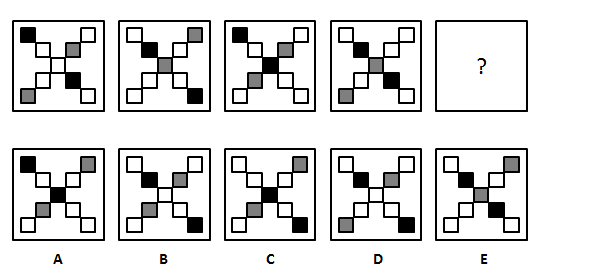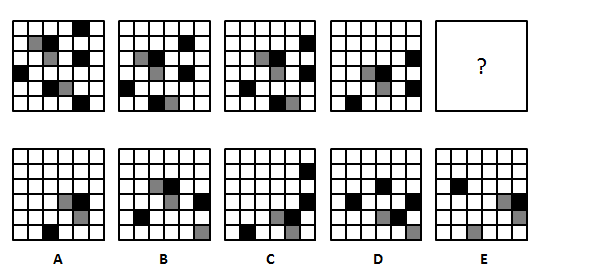Intermediate Inductive Reasoning Series
Have you ever wondered what distinguishes the top performer from the next best in inductive reasoning tests? Study has found that to perform well you need knowledge, practice and understanding of how non-verbal assessments really work in context of occupational testing. You need to have in-depth insight, expertise and training to find and spot the relationships between items to complete the sequence in quick and accurate way. The main purpose of the below section is to introduce you to the basic yet fundamental principles that create rationale of such measurement methods.
In the previous tutorial on inductive reasoning series we have reviewed specific patterns where connections between items were made by intersections or overlapping whereas in this section we will be concerned with rules created by shifting or moving items. You have certainly noticed that items or symbols can move in variety of different ways. For example, they can travel clockwise or counter-clockwise, shift from corner to corner or move apart or inside and outside of other shapes. Moreover, at the same time, they may follow other rules related to shading, rotating or changing their size or shape. To demonstrate this, consider the below tiles.
 |
At first glance the pattern of the black and grey squares in this sequence may seem to be somewhat chaotic. Nevertheless, when you take a closer look you will see that the squares follow a systematic pattern, that is, the black and grey squares shift one step down in each step. Furthermore, once they reach the bottom, the movement is again repeated from the top. So, by only looking at moves of black squares you can rule out options A, B, D and E and conclude that choice C must be the correct answer. Remember, when completing inductive reasoning test try to identify directions in a methodical and systematic way. To further demonstrate how to go about answering similar series review the below boxes.
 |
As with the previous example, students that are new to these aptitude exercises may find this sequence rather chaotic. However, more experienced test takers will quickly spot that some shapes in the above tiles follow specific pattern. For example, when you compare the first with second box, you will spot that the black and grey squares have shifted one grid downwards. Further, examining the third square you may see that the black and grey boxes moved one step to the left. Now, by looking at fourth tile you will detect that the sequence follows relatively simple pattern where black and white squares alternate their moves and shift one step down and one step left at each stage. Hence, you can eliminate options B, C, D and E and conclude that the correct answer must be A. Note that for the best performance at your inductive reasoning tests you have to come across variety of problems to train your brain to get used to spotting and detecting subtle differences that often create logic and mechanics of these assessment measures.

